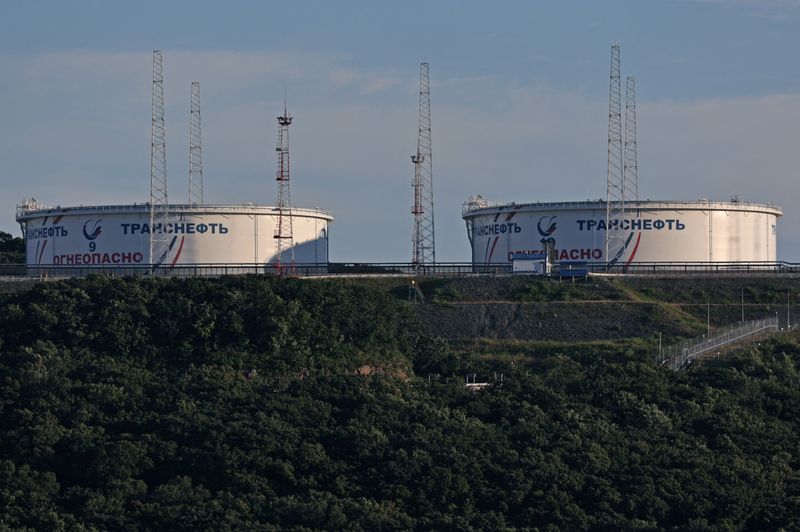Commodities
U.S. calls on Biden to continue releasing US strategic oil reserve

A group of Democratic members of congress is calling on U.S. President Joe Biden to continue releasing additional U.S. strategic oil reserves at least through the end of this year, CNN reported.
“We call on your administration to commit to releasing additional barrels of oil from the Strategic Petroleum Reserves (SPR) at least through the end of this year,” the network quoted eight Democrats as saying in a letter.
According to members of congress, average gas and oil prices in the U.S. are still above their 2021 levels. Therefore, lawmakers believe it is necessary to abandon the plan to stop releasing oil reserves next month.
Also, members of Congress urged Biden to use $121 million from the SPR fund to replenish reserves. The letter also voiced the administration’s proposal to agree to buy the country’s produced gas and oil.
Strategic oil reserve level
Earlier, the U.S. Energy Department reported that the strategic oil reserve level in the country decreased by 8.4 million barrels, or 1.9% – to 434.1 million barrels. The indicator is at its lowest since October 1984.
Earlier we reported that the National Iranian Oil Company increased its oil supply to 2.52 mln bpd in August.
Commodities
Oil prices in third weekly plunge as demand concerns bite

Investing.com– Oil prices settled lower Friday, suffering a third consecutive losing week as concerns over sluggish demand conditions in China dented sentiment.
At 14:30 ET (18:30 GMT), fell 2% to $80.70 barrel, and dropped 1.4% to $77.16 a barrel.
Crude in third straight week of losses
The third losing week for oil prices was driven by ongoing concerns over slowing growth and weaker demand from top importer China as data showed the country’s apparent oil demand fell 8.1% to 13.66 million barrels per day in June.
The persist growth concerns in China follow a weaker GDP print last week showing its economy grew less than expected in the second quarter.
Beijing attempted to arrest worries about stumbling growth by unexpectedly cutting a swathe of lending rates this week, but that has done little to lift sentiment.
Apart from China, uncertainty over Japan also grew following middling , while weak activity data in Europe also pointed to economic woes.
Gaza ceasefire in focus
Also weighing on the crude market have been increasing hopes of a ceasefire in Gaza.
The leaders of Australia, New Zealand and Canada called for an immediate ceasefire in a joint statement on Friday, while U.S. Vice President Kamala Harris has pressed Israeli Prime Minister Benjamin Netanyahu to help efforts at reaching a deal, striking a tougher tone than President Joe Biden.
A ceasefire has been talked about for months, but if it was to occur then some of the risk premium could be removed from the market.
Strong US growth, cooling inflation data boost rate cut hopes; Rig counts jump
The downside in oil prices was limited somewhat by stronger data out of the U.S. showing better-than-expected Q2 growth and cooler inflation, stoking investor optimism on a soft landing and sooner rate cuts.
According to data from the Bureau of Economic Analysis, the (PCE) price index slipped to 2.5% in June, from 2.6% the prior month. .
On the domestic demand front, meanwhile, data showing steady drawdowns in U.S. also offered some positive cues to oil markets, as fuel demand in the country remained robust amid the travel-heavy summer season.
In sign of pick in drilling activity, oilfield services firm Baker Hughes on Friday reported its weekly U.S. rig count climbed to 482 from 477.
(Ambar Warrick contributed to this article.)
Commodities
Should you buy a dip in copper prices? UBS discusses

The recent dip in prices has investors questioning whether now is the time to buy. UBS analysts have weighed in, providing a nuanced view on the current and future outlook for copper.
According to UBS, speculative momentum rather than fundamentals pushed copper prices to near-record highs in May.
Investors were said to be positioning for medium-term structural deficits driven by secular energy transition demand growth and mine supply constraints. However, UBS believes the focus has now shifted to near-term demand risks, particularly in China, along with a lack of tangible improvement in Europe and the U.S.
UBS notes, “Near-term fundamental signals for refined copper remain weak,” pointing out that weak data and lack of support from China have exacerbated the situation.
The bank’s analysts state that this shift has led to a 60% decline in LME net long positioning and a 20% correction in the copper price.
Furthermore, UBS feels near-term fundamentals have deteriorated more than expected, with increasing inventories and a surge in China’s refined exports.
The weakness in demand for refined copper has been accentuated by mid-stream destocking and state grid delays in purchases. “European demand may not be getting materially worse… but it is not getting any better,” UBS adds, highlighting persistent weak sentiment in the region.
On the supply side, the bank says major copper miners are trimming their production forecasts. Despite tightness in the concentrate market, refined output remains robust, especially in China.
UBS expects smelter cuts to materialize in late 2024 or early 2025 when the annual benchmark treatment charge resets lower.
Despite these short-term challenges, UBS remains optimistic about copper’s medium-term outlook. The analysts state, “Secular demand drivers (renewables, grids, EVs) remain largely intact.” They foresee a tightening physical market over the next 6-12 months, driving higher prices.
Overall, while near-term fundamentals are weaker, the long-term outlook for copper remains positive, according to the investment bank.
Commodities
Oil falls 1.5%, ends week lower on China demand fears

By Erwin Seba
HOUSTON (Reuters) -Oil futures fell about 1.5% on Friday, finishing the week lower on declining Chinese demand and hopes of a Gaza ceasefire agreement that could ease Middle East tensions and accompanying supply concerns.
settled down $1.24, or 1.5%, at $81.13 a barrel. West Texas Intermediate crude ended $1.12, or 1.4%, lower at $77.16 a barrel.
For the week, Brent was trading down more than 1% while WTI fell beyond 3%.
“Yesterday’s better-than-expected U.S. GDP growth figures initially supported the crude market,” said George Khoury, global head of education and research at CFI. “However, these gains were overshadowed by concerns about declining Chinese oil demand.”
Data released last week showing that China’s total fuel oil imports dropped 11% in the first half of 2024 have raised concern about the wider demand outlook in China.
“The Chinese demand situation is going down the tubes here and prices are going down with it,” said Bob Yawger, director of energy futures at Mizuho in New York.
China’s economy is threatening to enter a deflationary cycle, where prices will fall because of falling demand, Yawger said.
“And that is about the worst possible scenario for a country that is the largest importer of crude oil on the planet,” he said.
Meanwhile, demand from the world’s top oil consumer was also expected to ease as U.S. refiners are preparing to cut back production as the end of the summer driving season in early September nears.
The nation’s second largest refiner, Valero Energy (NYSE:), said on Thursday its 14 refineries would run at 92% of combined capacity in the third quarter. Valero’s refineries ran at 94% in the second quarter.
In the Middle East, hopes of a ceasefire in Gaza have been gaining momentum.

A ceasefire has been the subject of negotiations for months, but U.S. officials believe the parties are closer than ever to an agreement for a six-week ceasefire in exchange for the release by Hamas of female, sick, elderly and wounded hostages.
Baker Hughes’ count of U.S. oil drilling rigs, an early indicator of future output, increased by five to 482 this week and by three in July, raising the number of rigs for the first month since March.

 Forex2 years ago
Forex2 years agoForex Today: the dollar is gaining strength amid gloomy sentiment at the start of the Fed’s week

 Forex2 years ago
Forex2 years agoHow is the Australian dollar doing today?

 Forex2 years ago
Forex2 years agoUnbiased review of Pocket Option broker

 Forex2 years ago
Forex2 years agoDollar to pound sterling exchange rate today: Pound plummeted to its lowest since 1985

 Cryptocurrency2 years ago
Cryptocurrency2 years agoWhat happened in the crypto market – current events today

 World2 years ago
World2 years agoWhy are modern video games an art form?

 Stock Markets2 years ago
Stock Markets2 years agoMorgan Stanley: bear market rally to continue

 Economy2 years ago
Economy2 years agoCrude oil tankers double in price due to EU anti-Russian sanctions

































